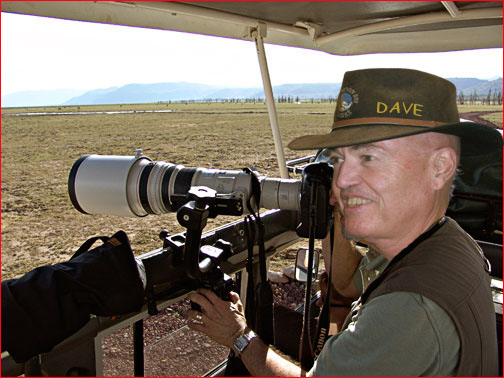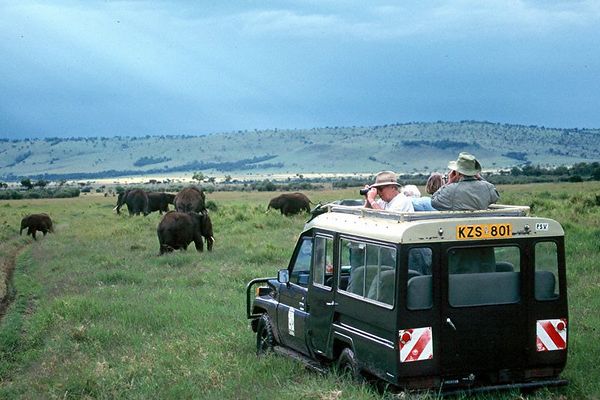The Best Safari Tracker in the World
John Sebastian Witherspoon AKA Dave


"Serengeti is the last place in Africa where one can still see large herds of game roaming across the grassy plains." John Sebastian Witherspoon, whose nickname became the acronym DAVE (Devoted to Animals, Valuing the Endangered), founder of African Photo Safari, will safely guide you through the midst of the famous 500 mile migration route from Serengeti to Kenya.
DAVE will tell you the migration is one of the many reason to come spend time in Serengeti. The animals are constantly moving between the Serengeti and Masai Mara ecosystem.
Mr. Witherspoon’s enthusiasm is infectious when it comes to photographing animals that he has helped protect. An example of your day on a photo shoot will have taken you over the plains within a 25 mile radius of viewing and capturing photos of the Great Wildebeest.
The afternoon continues to be as successful as the morning. Under a tree, away from the main road, DAVE discovers two male lions with full stomachs. Separated from the males, under the next tree, five lionesses are dozing in the shade. We take lots of photos. On our way back to the lodge we see another leopard lying in a tree.
The dust from a day of driving over the Serengeti plains is horrendous and we look forward to having a bath back the lodge. Once the bath tub has been filled we are shocked by the water. It looks like it has already been used by many people before. It is cloudy and deep brown and smells horribly of chlorine. The desire to wash off the dust and sweat is so immense that regardless of the color and smell we jump in.
The soup for dinner they call minestrone, DAVE would call that a flavorless vegetable broth with a bit of garnish. In a few days’ time we will conclude that it is pretty normal to serve flavorless soups in Tanzania. The salt and pepper shaker are fortunately on every table. Despite the soup, the remaining four-course dinner is nice.
Take short walk to the souvenir shop and you will find the restaurant and kitchen staff members dancing and chanting in the restaurant. DAVE had mentioned that they do this every night to welcome the guests to the lodge.
African Photo Safari Tips
1. Bracket the difficult exposures if shooting film, or learn how to read histograms on digital cameras. When photographing wildlife, you typically have dark bodies against light backgrounds, which are one of the most difficult situations to expose for. An incident meter is also a great idea.
2. Know your equipment before you depart for your safari trip. Learning to use a new camera in the field will most likely end up as that of a test.
3. Bring along a bean bag, or some other means to support your camera. A stable camera platform is preferable to hand holding. I prefer the Kinesis Safari Sack product. Bring the longest lens that you can afford. There will be many shots that will be close, and there will be many that are far away. Having the best tool for the job will definitely help. In 35mm terms, a 400mm lens is a great starting point.
4. You should try and take your best photographs within the first hour of sunlight, and the last hour of sunlight. The closer the sun is to the horizon, the warmer and more dramatic your shots will be.
5. Try to practice the 'rule of thirds'. By offsetting your subject away from the center of the frame, you will create nice negative space that has balance and harmony to your images.
6. At the very end of the day, when the sun is below the horizon, flash photography is a must. I have found that a Better Beamer or Flash X-Tender attached to your flash can illuminate wildlife farther away than you might think. Better Beamers are also great to put the catch light in the eyes of a far away mammal or bird.
7. Learn more about the wildlife you would like to photograph. You will be amazed at the abundance and variety of wildlife in east Africa, and how they interrelate.